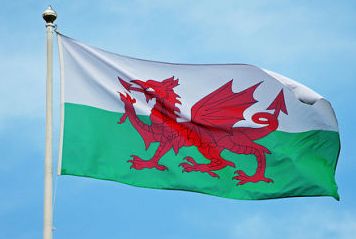1st March 2017 Holy See
St David and the Church in Wales

Today is St. David’s Day, a special day for the United Kingdom, and for Wales in particular. St David is the best known of the Welsh saints.
It is often said that Pope Gregory the Great sent St Augustine in 595 to bring Christianity to Britain. But that is not correct. After the Romans left Britain, the pagan Angles and Saxons conquered most of the island. But they did not penetrate far into Wales. The Christian church was able to survive in Wales, and became a place of refuge for many fleeing the invaders.
St Augustine was sent to baptise the Anglo-Saxon king of Kent, Ethelbert, and he succeeded in 597. He established his episcopal see at Canterbury. But despite letters from Pope Gregory, the Welsh churches refused to cooperate with the Augustinian mission. They had developed their own episcopal see from the Roman times, and they had their own language and traditions.
St David’s date of birth is unclear, sometime around 500. He was renowned as a preacher and founded a number of monasteries and churches, and he and his followers played a role in spreading Christianity throughout Europe. His rules for monastic life were strict, and followers were only allowed to drink water and banned from eating meat.
In about 518, David and companions including St Teilo and St Padam travelled to Jerusalem, where he was consecrated Bishop. His best known miracle occurred at the Synod of Brefi in around 550. He was preaching to a large crowd when the ground rose up under him to form a small hill. At the same time a white dove settled on his shoulder, which is how he is often depicted. It was following this Synod that he was elected Archbishop of Wales.
He died on 1 March, in either 589 or 601, and was canonised in 1120, and declared Patron Saint of Wales. At one point it was decreed that two pilgrimages made to St. Davids equalled one to Rome while three were worth one to Jerusalem.
Tradition states that St David is supposed to have advised the Welsh soldiers to wear a leek in their armour before a battle with the Anglo-Saxons, so they would be able to tell friend from foe. So he is also behind why the leek is one of the symbols of Wales.

Very pleased to read this, Stephen. Pope Benedict XV understood Wales well – but 100 years have flowed along the Tiber, the Thames and the Taff since then. Your post is a timely reminder of our proud Christian heritage in Wales. Happy St. David’s Day – Dydd Gŵyl Dewi hapus – and let’s look forward to March 1st next year when our national Saint’s Day won’t fall on Ash Wednesday!